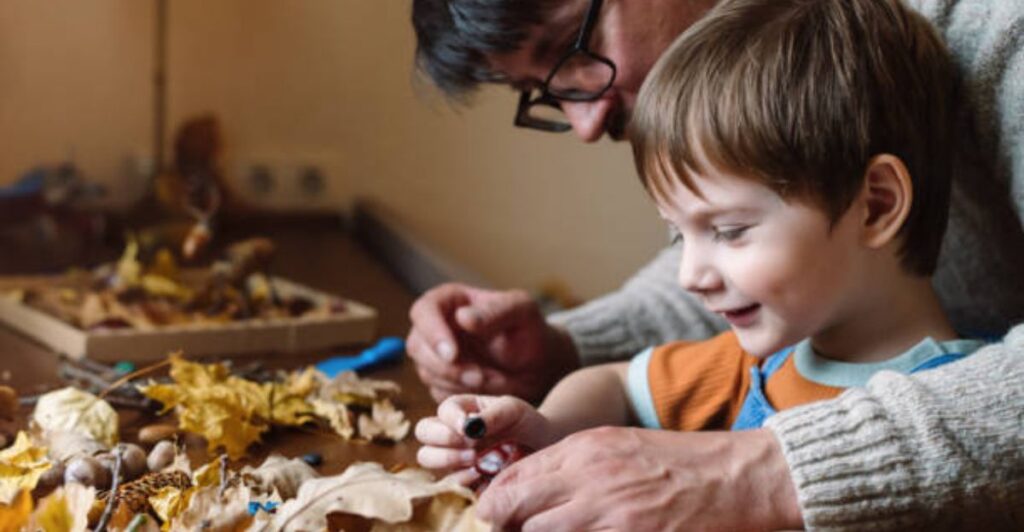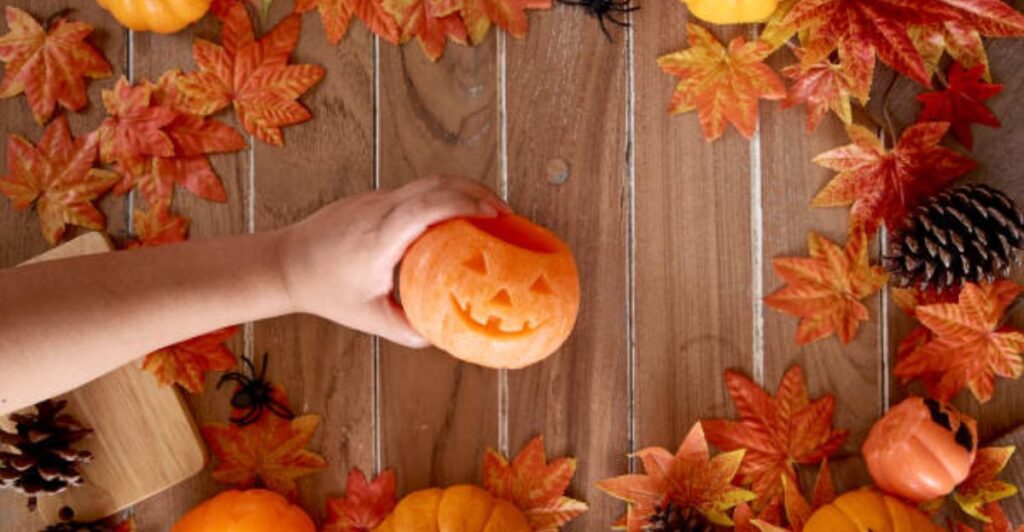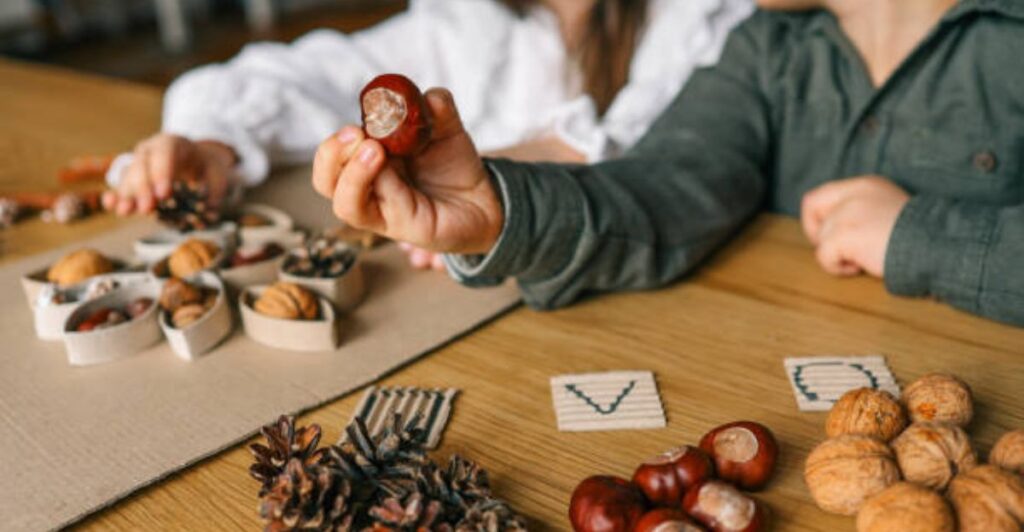Introduction
4 Charming Pinecone and Leaf Craft Ideas for Your Next Outdoor Picnic
Outdoor picnics offer the perfect opportunity to enjoy nature, unwind, and get a little creative with natural materials. If you’re planning a woodland-themed picnic or simply want to add some eco-friendly charm to your gathering, pinecones and leaves are your go-to supplies. These easily accessible items can be transformed into beautiful, functional, and decorative picnic elements. In this article, we’ll explore 4 charming craft ideas using pinecones and leaves that will make your outdoor picnic truly magical..
4 Charming Pinecone and Leaf Craft Ideas

1. Pinecone Tea Trays
Split open wide pinecones lengthwise to create small, natural trays. These can hold finger foods like nuts, berries, or dried fruit.
How to make:
- Slice the pinecone in half using a small saw or craft knife.
- Sand the inside slightly if needed.
- Line with a leaf or wax paper for a food-safe touch.
2. Leaf Cups
Fold and shape large, flexible leaves (like banana, tulip, or hosta) into small drinking cups or snack holders.
How to make:
- Choose leaves with no tears or holes.
- Fold into a cone shape and tie with twine or pin with a toothpick.
- Fill with trail mix or herbal tea (brief use only).
3. Nature Utensil Holders
Roll large leaves into cylinders and tuck in eco-cutlery or napkins. Add pinecone petals for embellishment.
Why it’s charming:
- Adds rustic elegance to your picnic layout.
- Compostable and reusable depending on the leaf type.
4. Pinecone & Leaf Name Tags
Attach a small folded leaf to a pinecone with the guest’s name written in calligraphy or marker. Ideal for themed gatherings or kids’ picnics.
Bonus Idea: Use the pinecone as a paperweight on picnic blankets to keep napkins or menus from flying away.
Tips for Crafting with Pinecones and Leaves

1. Collect the Right Materials
- Choose freshly fallen pinecones that are open and dry.
- Pick leaves that are flexible, undamaged, and freshly fallen (not too dry or crispy).
- Ideal leaves: banana, magnolia, hosta, ti, and even large collard greens for edible use.
2. Clean and Prep Naturally
- Pinecones: Rinse to remove dirt and insects. Bake at 200°F (90°C) for 20–30 minutes to sanitize and fully open them.
- Leaves: Gently wipe with a damp cloth. Soak stiff or curled leaves in warm water for 10–15 minutes to make them pliable.
3. Use Natural Tools
- Stick to eco-friendly supplies like:
- Twine or jute rope
- Wooden skewers
- Scissors or garden shears
- Non-toxic glue or glue dots (if needed)
4. Protect Delicate Materials
- For fragile leaves, press them between heavy books for a day or two before using in flat crafts like placemats or name tags.
- For layered crafts, support soft leaves with cardboard or another sturdy backing.
5. Think Functional + Decorative
- Combine beauty and utility in your crafts:
- Pinecone trays for holding nuts
- Leaf cups for trail mix
- Pinecone place card holders
- Leaf-wrapped napkin rings
6. Add Seasonal Elements
- Mix in acorns, dried flowers, cinnamon sticks, or herbs for color, scent, and texture.
- Use colored leaves for autumn or fresh green leaves for spring/summer themes.
7. Practice and Pre-Shape
- Test-fold your leaf before securing it permanently.
- Shape pinecone parts (like petals) with wire cutters for more intricate designs.
8. Be Gentle, Especially with Kids
- Pinecones can be prickly—trim sharp edges or pick softer cones for child-friendly crafts.
- Leaves can tear easily—supervise younger children or prepare some pre-folded items ahead of time.
9. Display with Purpose
- Use leaf-and-pinecone crafts as:
- Picnic table decor
- Gift toppers
- Fairy garden accessories
- DIY name tags or party favors
10. Compost After Use
- After your picnic or party, compost your crafts instead of tossing them. It keeps your project sustainable and earth-friendly.
Trending Now: Natural Picnic Decor in 2025
In 2025, there’s a growing shift toward sustainable, low-waste outdoor decor. Whether it’s for eco-conscious events, Instagram-worthy setups, or relaxing family gatherings, people are embracing nature-sourced materials for picnic styling.
Popular trends include:
- Boho forest themes
- Zero-waste party kits
- Leaf imprint tablecloths
- DIY natural utensil holders and serving trays
Suggestions to Make Your Picnic Extra Special
- Pair with Wildflower Bouquets: Scatter wildflowers around your picnic setup for extra charm.
- Use Wood Slices as Serving Boards: Continue the woodland theme naturally.
- Create a Nature Craft Corner for Kids: Provide extra pinecones and leaves so kids can make their own creations during the picnic.
- Photograph Your Crafts: These ideas are not only useful—they’re photogenic too! Share your picnic craft moments on Instagram or Pinterest.
Are pinecone crafts food-safe?
Pinecone crafts are not inherently food-safe, but you can make them safer for food use with a few precautions:

✅ When They’re Safe to Use for Food:
- For Dry Snacks Only: You can place nuts, dried fruits, crackers, or wrapped items on pinecone trays.
- Use a Liner: Always place wax paper, banana leaves, or parchment paper between the pinecone and the food.
- Proper Cleaning: Wash the pinecones thoroughly and bake at 200°F (90°C) for 30 minutes to kill insects or bacteria.
❌ When to Avoid Direct Contact:
- For Wet or Moist Foods (like dips, fruit slices, or desserts)
- Uncleaned or Freshly Picked Pinecones
- If Treated with Paint or Glue – never place food directly on decorated crafts unless sealed and food-safe.
🧼 Pro Tip:
Sealing pinecones with a food-safe shellac or beeswax can make them more hygienic for repeated dry food use.
Which leaves work best for cups or wrappers?
Great question! When making leaf cups or wrappers, it’s important to choose leaves that are flexible, non-toxic, sturdy, and large enough to fold or shape. Here are the best types of leaves to use:
✅ Top Leaves for DIY Cups or Wrappers
1. Banana Leaves
- Best for: Folding into snack cups, wrappers, or liners
- Why: Large, waterproof, and naturally food-safe
- Bonus: Often used in traditional cooking across Asia and South America
2. Hosta Leaves
- Best for: Temporary wrappers or decorative snack holders
- Why: Broad, thick, and flexible
- Caution: Some varieties are edible, but always confirm the type before food use
3. Magnolia Leaves
- Best for: Elegant, sturdy food presentation
- Why: Thick, leathery texture makes them great for holding dry snacks
- Note: Not edible, but safe for indirect food contact
4. Ti Leaves (Cordyline)
- Best for: Wrapping and folding
- Why: Traditionally used in Hawaiian cooking
- Bonus: Holds shape well and adds a tropical look
5. Cabbage or Collard Greens (Raw)
- Best for: Edible cups or wraps
- Why: Food-safe and flexible when fresh
- Great for: Raw wraps or rustic presentation
⚠️ Leaves to Avoid
- Poisonous plants (e.g., oleander, rhubarb leaves, castor plant)
- Thin or dry leaves that tear easily
- Sprayed or chemically treated foliage
🌿 Pro Tips:
- Soak stiff leaves in warm water for 10–15 minutes to soften before shaping.
- Use natural twine or toothpicks to secure the shape.
- Line leaf cups with wax paper for added protection, especially with moist food.
Conclusion
With just a few pinecones, some leaves, and a bit of imagination, you can elevate your next outdoor picnic into a cozy, nature-inspired gathering. These charming crafts are perfect for all ages, eco-conscious, and incredibly cost-effective. So, grab your craft basket and head into the woods—your magical picnic awaits!
References
- National Wildlife Federation: Using Nature in Outdoor Play
- Treehugger: Crafting with Pinecones
- EcoWatch: Zero-Waste Picnic Tips
- Pinterest Trends: Nature-Inspired Picnic Decor (2025)
FAQs
Q1: How long do leaf crafts last?
Freshly made leaf crafts typically last 1–2 hours before drying or wilting, so prepare them just before your picnic.
Q2: Can I reuse these natural crafts?
Leaf crafts are usually single-use, but pinecone trays and name tags can be reused if stored properly.
Q3: How do I safely collect pinecones and leaves?
Gather only fallen items, avoid toxic plant materials, and rinse everything before use.

